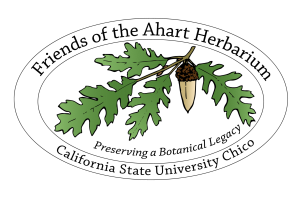Identifying Lichens to Genus
March 23, 2019, Saturday
9:00–4:00
Details and Registration
Think small. The symbiotic organisms we know as lichens are usually identified in the field by characters that are typically around 1 mm in size. They are largely intolerant of poor air quality and disturbance, yet are found in some of the harshest environments on earth, and are able to withstand the vacuum of space. There are reported to be slightly less than 5000 lichen species in 646 genera in North America, and just under 1900 species in California, yet few people are able to place names on even the most common lichens, which means that an essential component of most natural resource inventories is lacking. Opportunities to learn about identifying lichens are infrequent, although the basic characters used in identification can easily be learned in a day.
This one‐day workshop will focus on identifying to genus the lichens of the lower Sierra Nevada/Cascade foothills. The morning will be spent covering lichen basics – anatomy, morphology, and reproduction of lichens; be prepared for some new vocabulary! Lunch will be in the field, with lichens, and possibly some hands-on collecting. Afternoon will be back in the lab for guided exploration, using dissecting ‘scopes, reference materials, chemical spot tests, and vouchers, and a key provided by the instructor. Please bring dissecting tools, a hand lens, a thumb drive, and lunch. Participants will benefit more from the workshop if they are experienced with using dichotomous keys.
The workshop will be led by Tom Carlberg. Tom has a degree in Botany from Humboldt State University. He has been a cryptogamic botanist for 18 years, working for the Forest Service, private contractors, and non-profit organizations. His ongoing interest is mapping the range and distribution of lichen species across California. Toward this end he has submitted more than two thousand lichen specimens to public and government herbaria. He is the President of the California Lichen Society, a position he uses to emphasize how little is known of California’s lichen flora, and how new species and new information can be discovered even by relative neophytes. He is a member of the British Lichen Society, the American Bryological and Lichenological Society, and is past Editor of the Bulletin of the California Lichen Society (CALS), and a member of the Society’s Conservation Committee.
This workshop has been approved for 3 Professional Development Credits by the California Consulting Botanist Board of Certification

